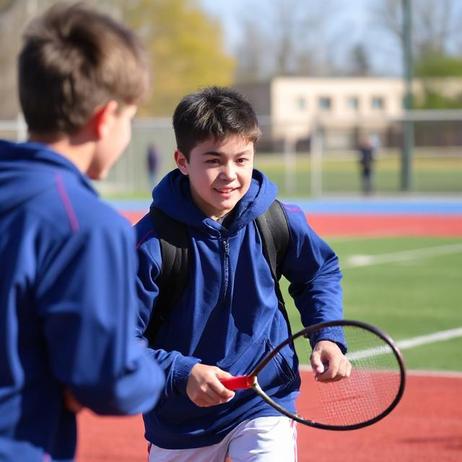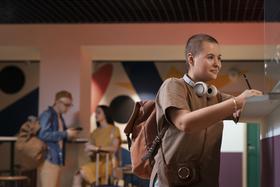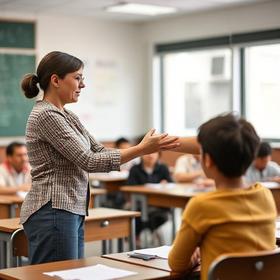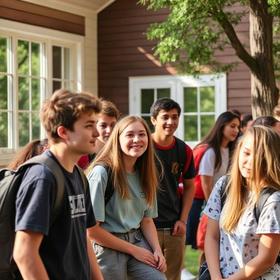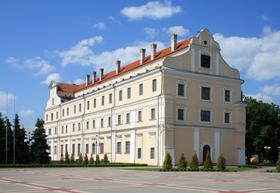Boarding School Sports and Athletics: What Families Need to Know
When families explore boarding school options, questions around academics tend to dominate. Yet for many students the athletics or sports program is just as pivotal—especially at boarding schools where sport is often integrated into the daily rhythm of campus life. In this article we will look carefully at boarding school sports and athletics: how they operate in 2025, what unique advantages and considerations exist, and how parents, students and educators can evaluate programmes and make good decisions.
Why athletics matter at boarding schools
The boarding school environment offers a distinctive setting for student-athletes. Living on campus means proximity to coaches, teammates and training venues — and often a blended rhythm of academics, practice, competition and recovery.
Key benefits
Enhanced access and structure – On-campus residence gives students easier access to training facilities, scheduled practices and team events. One review noted this advantage when comparing boarding versus day environments for student-athletes.
Holistic development – Participation in athletics supports not just physical fitness, but important life skills: time-management, teamwork, discipline, leadership. Research in Ontario found student-athletes scored higher on key developmental assets and reported greater engagement at school.
Academic correlation – A 2024 study from the University of Sydney found that continual sports participation during school years correlated with higher academic performance, better attendance and increased likelihood of university enrolment. The University of Sydney
Team culture and camaraderie – Boarding school teams often serve as central community hubs; being part of team life can deepen connections, reduce isolation, and enhance the overall residential experience.
What “boarding school sports and athletics” means in practice
In this context, the phrase covers:
Varsity and junior varsity teams for a full range of sports (traditional like football/rugby, basketball, track, as well as emerging ones like mountain-biking, kayaking) Experience Boarding
Structured practice schedules integrated into daily life (often including fitness, strength/conditioning, specialised coaching)
Competition travel: inter-school leagues, regional and national tournaments
Athletic-academic support: study halls, tutoring, recovery protocols, dual-track programmes
Residential life integration: dorm, meals, downtime — all scheduled around the athletics ecosystem
What families should ask and consider
Choosing a boarding school for its sports programme involves more than simply judging “how good the team is.” Here are key questions and criteria.
Questions to ask
What levels of teams are offered? Is there only a “varsity A” team, or are there multiple levels (B, C, novice) so that beginners or less experienced athletes can participate and grow?
What is the balance between sports and academics? How are practice/travel schedules managed so schoolwork isn’t unduly compromised? Are there academic support systems for athletes?
Facilities and coaching quality – What strength/conditioning facilities, athletic trainers, physiotherapists and coaches does the school provide?
Recruitment/college pathway – For a student-athlete aiming for college-level sport, what exposure to scouts or recruitment pipelines does the school have?
Well-being and residential life – How does the boarding environment support recovery, leisure, social life, and avoid burnout?
Cost and travel – Athletic travel (away games, tournaments) adds to time away from residential life; cost and schedule burden should be clarified.
Inclusivity and option for non-elite athletes – Does the school make space for students who love sport but aren’t necessarily pursuing the “elite” track? Many boarding schools emphasise “sport for all” rather than just the top tier. IECA
Criteria and comparative table
| Criterion | What to look for | Why it matters |
|---|---|---|
| Team levels | Multiple team tiers (varsity, JV, novice) | Enables participation for more students, not just elite athletes |
| Academic-Athletic balance | Clear schedule for classes, study halls, and travel | Prevents academic decline or burnout |
| Facilities / support services | Strength training, physio, recovery, equipment | Enhances performance and reduces injury risk |
| Board/residence integration | Dorm life, meals, free time aligned with sport schedule | Ensures student wellbeing and social development |
| College/next-level exposure | Alumni athlete progression, scout visits, recruiting | Important for students aiming to compete NCAA/UK/university level |
| Cost + logistics | Travel distance, tournament schedule, hidden fees | Affects family budget and student time away from campus |
| Inclusivity | Opportunities for beginners or multiple sports options | Ensures broader student engagement beyond elite sport |
The advantages – and the trade-offs
Advantages
Immersive environment – The 24/7 boarding setting often means that athletes can maximise training, recovery and team cohesion in a way day students cannot.
Peer culture – Being surrounded by other motivated athletes creates a culture of performance, accountability and shared goals.
Time-management skills – Boarding athletes routinely juggle academics, practice, competition and residential life — a preparation for college life. One source at Oak Hill Academy emphasises the confidence and discipline gained. Oak Hill Academy
Athletic and academic synergy – Continued sports participation can support academic success and school engagement.
Trade-offs and challenges
Time demands – High-level athletics often means early practices, late games, travel and less downtime; this can strain student balance. A systematic review of sports schools found that while academic attainment often wasn’t harmed, some athletes felt increased load.
Being away from home – For younger boarding students especially, being separated from family support can be emotionally challenging; the added sports schedule may exacerbate this.
Cost – Boarding plus athletics can be expensive, especially where travel and equipment are substantial, and families should consider value.
Risk of over-specialisation – Focusing too intensively on one sport early can increase injury risk or limit broader student experience. Research suggests that highly sports-focused environments might provide less development of career adaptability than more balanced ones. PMC
Recent updates and trends in 2025
In 2025 the landscape of boarding school sports and athletics includes a few notable trends:
Greater emphasis on well-being and recovery: Schools are investing more in sports psychology, mental health, and athlete wellness programmes to address burnout and overuse injuries.
Diversification of sports offerings: Beyond traditional varsity sports (football, rugby, basketball) boarding schools are increasingly offering non-traditional sports (e.g., mountain biking, ultimate frisbee, sailing, e-sports) to appeal to wider student interests. Experience Boarding
Stronger integration of academics and athletics: More schools are adopting dual-track models that deliberately coordinate academic and athletic calendars to reduce conflicts and support student-athletes.
Focus on college recruiting pathways: Schools are partnering with recruiting platforms, hosting showcase events, and leveraging alumni networks to support student-athlete college progression.
Data-driven training and analytics: Many boarding schools now offer performance tracking (GPS in field sports, video analysis, strength & conditioning dashboards) which can help students optimize performance and reduce risk.
Equity, access, and inclusion: Awareness is growing about ensuring athletic opportunities for girls, under-represented students and non-elite athletes — boarding schools are responding with more inclusive programmes.
How families can evaluate and choose the right fit
Given the importance of athletics, here is a step-by-step guide for families evaluating a boarding school for sports:
Define goals together – Is the student aiming for elite college athletics, or is sport a passion component alongside academics and boarding life? Clarifying this helps filter schools.
Visit the campus (virtually or physically) – Attend a practice, meet coaches, talk with current student-athletes about time commitments, travel, and how their school balances sport and studies.
Interview the coach and head of athletics – Ask about team levels, development opportunities for beginners, injury prevention, college recruiting track, and how many athlete-boarders there are.
Review the schedule and calendar – Request a sample week of a student-athlete: class time, practice, meals, study hall, downtime. Check how much travel occurs and how often.
Check academic support – Does the school offer tutor support for athletes? How are missed classes due to travel handled? What is the graduation/college matriculation rate for athletes?
Ask about student-wellbeing and residential life – How do dorms support athlete recovery (quiet hours, nutrition, sleep)? How are social/free-time elements balanced?
Consider costs and logistics – Beyond tuition and boarding fees, ask about uniform/equipment costs, tournament travel, time away from home.
Speak with current families/alumni – Real-life feedback is invaluable: what do athletes say about balance, injuries, college opportunities, boarding-life experience?
Check fit for non-elite athletes – If the student is passionate but not at elite level, ensure the school offers programmes where they can participate, develop and enjoy rather than simply being “bench” or unsupported.
Re-evaluate regularly – The sports programme might evolve; stay in touch with the coach and admissions as decisions are made.
Summary and final thoughts
Boarding school sports and athletics represent a compelling opportunity for many students: combining immersive residential life with structured team culture, skill development and academic synergy. For families considering this path in 2025, the benefits are real — but so are important considerations around fit, balance, cost and well-being.
If a student is motivated, adaptable, seeks a full residential experience and is ready to commit to the demands of sport and boarding life, then a strong boarding school athletics programme can be a powerful platform for growth — on the field, in the classroom and into college and beyond. On the other hand, if the student is less certain about heavy travel or high training loads, or prefers more flexibility, then careful evaluation of the programme’s levels and support structures is key.
In short: go beyond the win-loss record or varsity badge. Look at the ecosystem — team culture, residential life, academic support, coaching quality, recovery and well-being. Ask the right questions up front. Visit. Talk. And choose a programme that aligns with the student’s goals, personality and long-term growth.
By paying attention to these factors, families can approach boarding school athletics with clarity and confidence — ensuring that sport becomes a strength in the boarding experience rather than a compromise.

